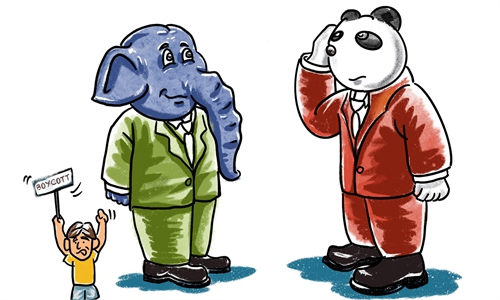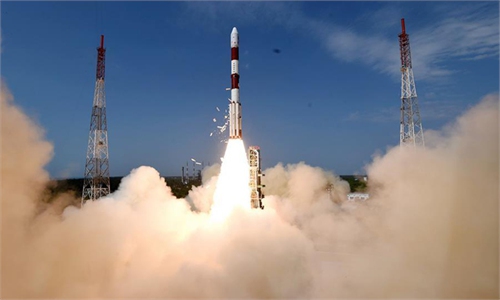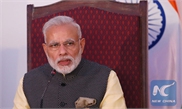COMMENTS / EXPERT ASSESSMENT
India isolates itself from regional growth opportunities

Illustration: Xia Qing/GT
Among India's trade partners that have seen slumping shipments to the South Asian country, China showed a relatively resilient pace, with its share increasing in India's total imports during recent months despite the COVID-19 pandemic and India's constant undermining of bilateral ties.According to India's Department of Commerce, Chinese products took 18.3 percent of its total imports from April to September, up from 14.6 percent in the same period last year, contrary to the Modi administration's intention to reduce reliance on its largest trading partner and be self-reliant.
Indian traders and manufacturers are struggling to end reliance on Chinese goods, partly thanks to a lack of high-quality, locally made alternatives, the South China Morning Post reported, citing concerns from Indian traders of losing market share if they replace Chinese supplies.
From pharmaceuticals to silk textiles, India relies on Chinese supplies, making it hard to reduce its dependence on China, especially when its own production is being hindered by fast-spreading coronavirus infections.
While India's imports from China remained relatively resilient despite its drastically shrinking trade in the past months, there's no denying that bilateral economic ties have been undermined due to New Delhi's biased intention to disengage from China.
Besides triggering disputes with China at the border, New Delhi has not stopped confronting Beijing in various economic areas, from banning Chinese apps to prolonging clearance of shipments from China, as well as heightening scrutiny of Chinese investments.
Not to mention that the US, Japan and Australia have sided with India, trying to establish new industry chains with less or even no involvement by China, the world's second-largest economy with a sound industry chain. Although it will be a tough campaign for the countries, it is hard for India to change its strategy under such circumstances.
The prospects for economic ties between China and India remain dim.
Meanwhile, China, with effective containment of the COVID-19 outbreak and a rapid economic recovery, has been actively promoting regional economic integration with Asia-Pacific countries, forming the world's largest free trade zone - the Regional Comprehensive Economic Partnership (RCEP).
India dropped out of RCEP negotiation at the end of 2019, and it could be even harder for the protectionism-inclined economy to join in the Comprehensive Progressive Trans-Pacific Partnership (CPTPP), or reach free trade agreements with the US or the EU, which have higher thresholds.
Moreover, the Indian economy has relatively low economic complementarity with the Association of Southeast Asian Nations, and it's hard for it to gain sufficient growing momentum from the South Asian Association for Regional Cooperation. It is expected that Indian government will reflect on its economic strategies, which may isolate it from ongoing regional economic integration and miss out on future opportunities.
The article was compiled based on an interview with Liu Zongyi, secretary-general of the Research Center for China-South Asia Cooperation at the Shanghai Institutes for International Studies. bizopinion@globaltimes.com.cn



